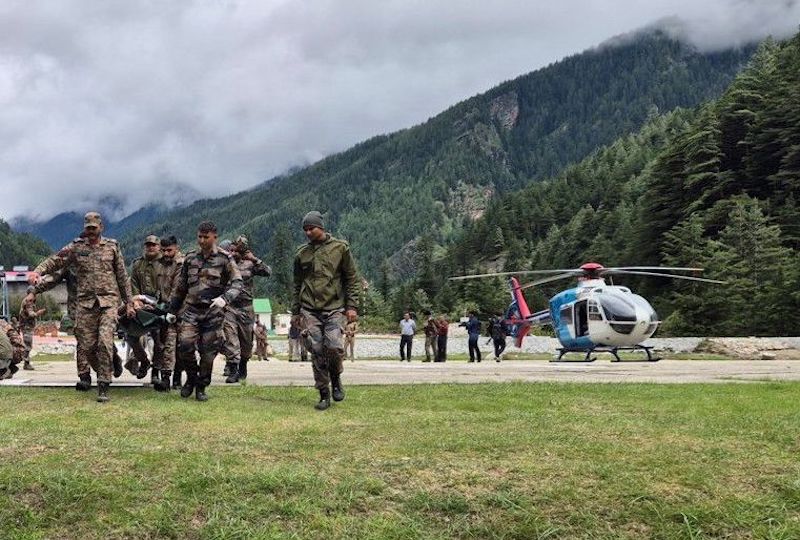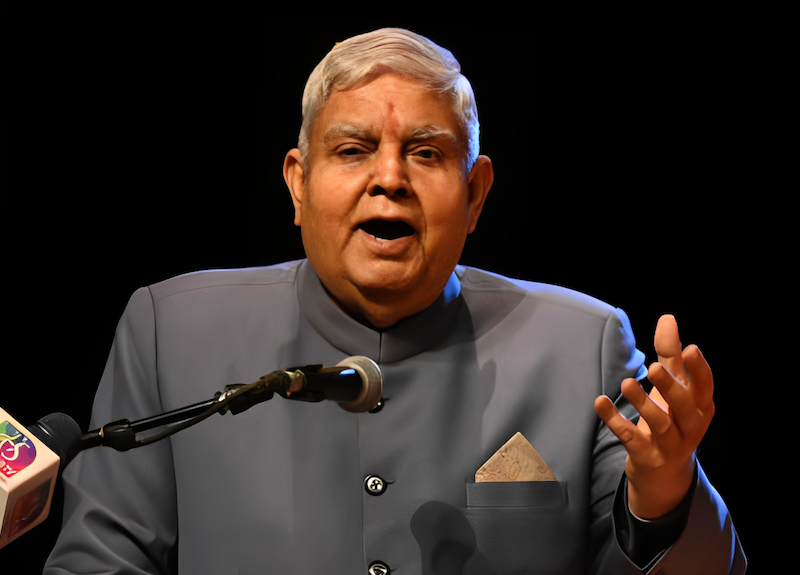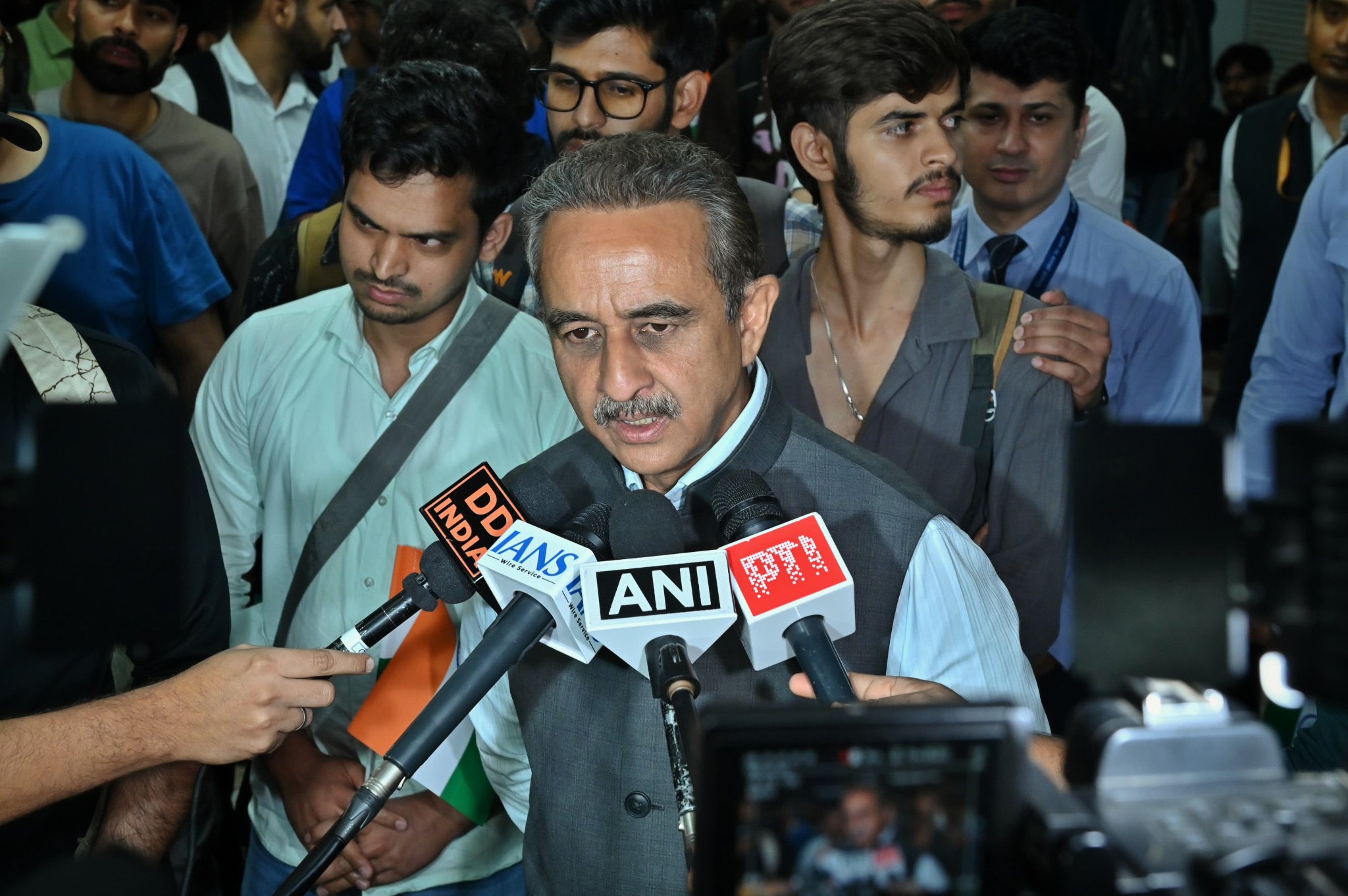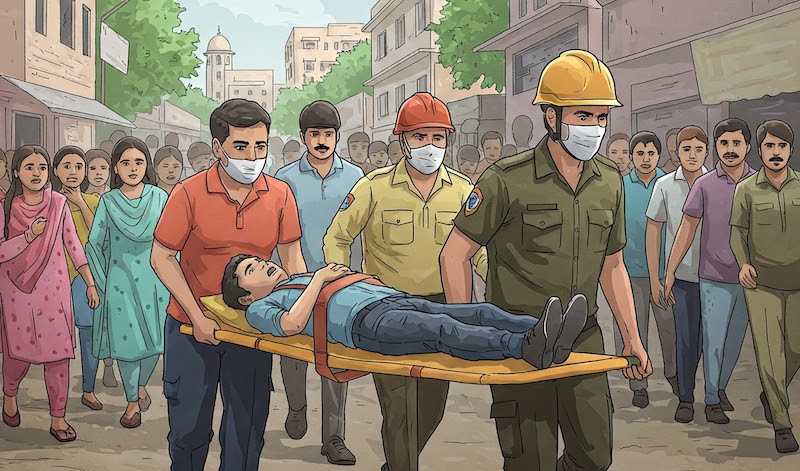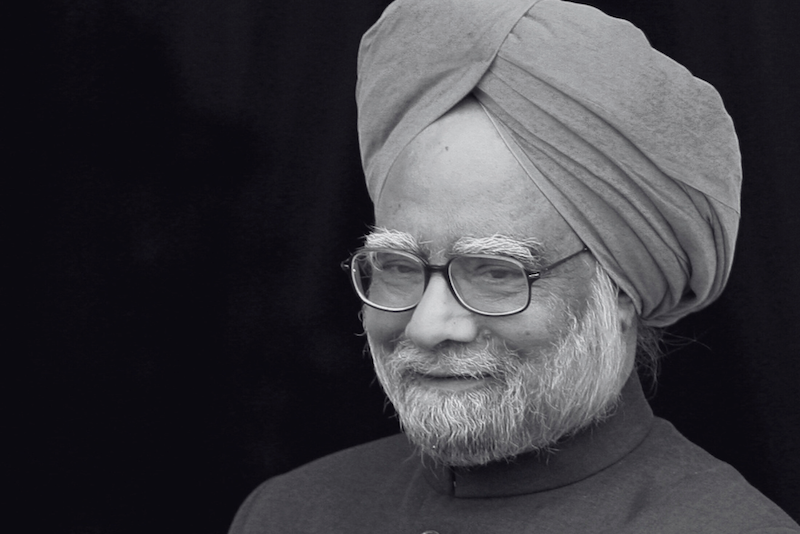 Army personnel and other responders rescue an injured person at the flood-hit Dharali village. (Photo: Indian Army)
Army personnel and other responders rescue an injured person at the flood-hit Dharali village. (Photo: Indian Army)
Dehradun/New Delhi: The devastating cloudburst that struck Uttarakhand’s Dharali village on Tuesday has left over 100 people missing and triggered one of the state’s largest disaster response operations in recent years. The flash floods, which began at around 1.30–145pm completely destroyed the high-altitude settlement and surrounding areas in Uttarkashi district, as India Sentinels had reported on Tuesday.
The disaster originated from a massive cloudburst in the upper catchment of the Kheer Ganga river, unleashing torrents of water, mud and debris that swept through Dharali village, which is located at an altitude of 2,680 metres. Located on the pilgrim route to Gangotri Dham, the village was hosting a local fair called “Hardudu” when the floods struck, contributing to the high casualty numbers.
Death toll rises
Confirmed fatalities stand at five, but rescue teams fear the number could rise significantly as they access more remote areas. Among the missing are 11 Indian Army personnel from the damaged Harsil camp and a 28-member tourist group from Kerala. The village’s role as a tourist hub, with numerous hotels and homestays occupied during peak season, has complicated casualty assessments.
Over 50 buildings were destroyed or severely damaged, including hotels, shops and residential structures. The Dharali market area was completely submerged, while the ancient Kalp Kedar temple lies buried under debris. Preliminary damage reports indicate at least 50 hotels were swept away alongside 40-50 houses.
Infrastructure damage has been equally severe, with 163 roads blocked by landslides, including five national highways. The collapse of Ganganani bridge has forced all rescue operations to rely exclusively on helicopter transport, significantly constraining operational capacity.
Military leads coordinated rescue effort
The Indian Army has deployed over 225 personnel from infantry and engineering units in what officials describe as one of their most comprehensive humanitarian operations. Combat engineers have reached Dharali to clear debris, while seven specialized teams operate with ground-penetrating radar near Tekla. Search and rescue dogs from the Army’s Remount Veterinary Corps have been deployed at multiple locations.
Army rescue teams have successfully evacuated more than 70 individuals, with operations continuing round the clock despite challenging terrain. Eleven injured army personnel were airlifted to the Indo-Tibetan Border Police hospital in Matli. Military engineers have established makeshift infrastructure, including ziplines for dangerous river crossings, and restored the Harsil military helipad to improve coordination.
The Indian Air Force has positioned multiple aircraft types including Mi-17 helicopters, ALH Mk-III, C-295 aircraft and An-32s from Agra and Bareilly air bases. However, dense fog and zero visibility conditions have severely restricted flight operations. Two Boeing CH-47 Chinooks, two Mil Mi-17s, an Aérospatiale SA 315B Lama and a HAL Dhruv remain on standby.
According to latest reports, as of now, the Indo-Tibetan Border Police has emerged as the operation’s most effective rescue agency, deploying 130 personnel across five teams. ITBP units rescued 110 people on the first night alone, including both locals and tourists, with some evacuated to Gangotri Dham and injured individuals receiving first aid at border outposts.
The force has successfully rescued 37 villagers, comprising 22 men, 11 women and four children, during the flash floods. Five seriously injured individuals were evacuated to ITBP hospitals, while border posts have been converted into temporary relief centres.
National Disaster Response Force teams, though delayed by blocked roads and adverse weather, have coordinated the rescue of approximately 150 people. The specialized force has deployed collapsed-structure search equipment particularly suited to debris-heavy environments. In a related operation, NDRF teams rescued 413 pilgrims from the Kinnaur Kailash Yatra route.
The Uttarakhand State Disaster Response Force units, with six personnel at ground zero, have conducted helicopter-assisted evacuations while providing first aid to injured civilians. Their local terrain knowledge has proved invaluable in the challenging mountain rescue environment.
Weather warnings
Dense fog, continuous rainfall and poor visibility have severely hampered both ground and air operations. The India Meteorological Department has issued warnings for continued heavy rainfall until August 10, raising concerns about additional emergencies in the region.
Communication disruptions from damaged mobile and electricity towers have forced rescue teams to rely on satellite phones for coordination, though contact remains intermittent. The massive accumulation of mud and debris, reaching depths of 15–20 feet in some areas, requires heavy machinery to clear access routes and search for survivors.
The Uttarkashi-Harsil road remains severely affected, with key stretches near Bartwari, Linchigad and Gangrani completely washed away. The civil helipad at Dharali remains non-functional due to mudslides, forcing exclusive reliance on helicopter operations for personnel and supply transport.
Centre responds to disaster
The prime minister, Narendra Modi, personally contacted the Uttarakhand chief minister, Pushkar Singh Dhami, to assess the situation and assured complete central support. Modi expressed condolences while emphasizing that “no stone is being left unturned in providing assistance to the people.”
The Union home minister, Amit Shah, has directed additional NDRF and ITBP deployments while assuring all necessary central support. The central government has activated air force stations for round-the-clock operations and placed multiple helicopter types on standby.
Dhami has remained in Uttarkashi personally overseeing operations while the state government approved ₹20 crores from the Uttarakhand State Disaster Response Fund for relief and rescue work. Over 160 police officials, including 10 deputy superintendents and three superintendents, have been deployed alongside three IAS officers and three IPS officers to ensure effective coordination.
Border Roads Organisation teams, with expertise in Himalayan road construction, have been deployed for restoration efforts. The organization’s previous construction of 947 kilometres of roads in Uttarakhand makes their involvement crucial for long-term recovery planning.
Rescue operations continue
Current reports confirm 413 people have been rescued from various affected areas while approximately 100 people remain stranded. The death toll of five people may rise as rescue teams access more remote locations using heavy machinery, drones and tracker dogs.
Medical facilities have been established for injured survivors, with helicopter evacuations ongoing for serious cases. The disaster has highlighted both the Himalayan region’s vulnerability to extreme weather events and India’s disaster response coordination capabilities.
Weather forecasts continue predicting heavy rainfall in the region, necessitating continued vigilance for potential additional emergencies. The full extent of casualties and operational success will only become clear as conditions improve and access to affected areas is restored.
The Uttarakhand disaster underscores the increasing frequency of extreme weather events in the Indian Himalayas, where rapid glacial melt, deforestation and climate change have created conditions conducive to flash flooding. Similar incidents in 2013 killed over 5,000 people in the state, while the 2021 Chamoli disaster killed over 200, highlighting the region’s ongoing vulnerability to climate-related disasters.

